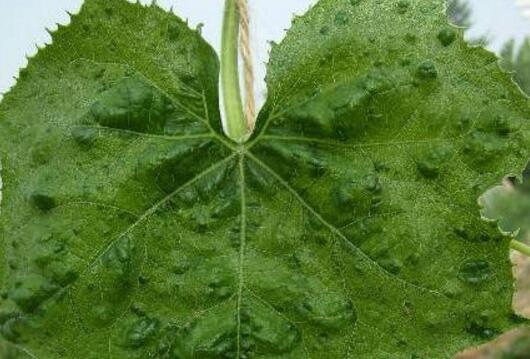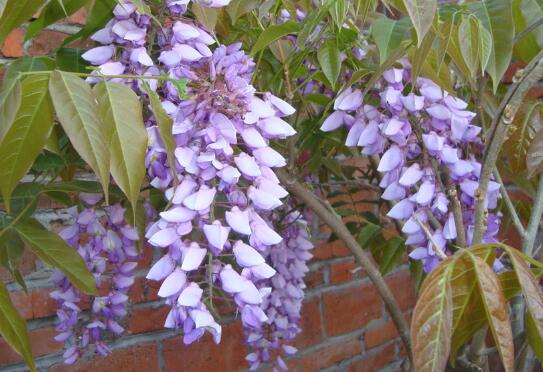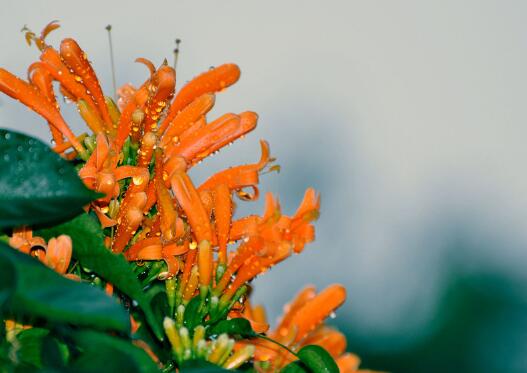High humidity / lack of fertilizer and water is the main cause of pest control of Prunus mume.
Even in the wild, five-colored plum can grow normally, so its adaptability is beyond doubt, but no matter how strong the adaptability is, diseases and insect pests will inevitably occur because of improper breeding methods of five-color plum. It will lead to the weak growth of five-color plum, so it must be prevented and treated in time. Today, let's take an inventory of the prevention and control of diseases and insect pests of five-color plum.
Disease Control of Prunus mume
1. Mosaic disease

Symptoms: the upper leaves of five-colored plum first appear the disease, the leaves appear thick green and light green flowers and leaves, the leaves will also be wrinkled and deformed, the flowers are few and the flower organs are deformed, the whole plant class is short, and brown markings will appear at the same time.
Cause of the disease: the main sources of its pathogens are weeds and some plants with pathogens, the main causes of the disease are high temperature and drought, and five-colored plum is often short of fertilizer and water, which can be transmitted to other healthy plants with the help of some pests.
Prevention and control measures: ⑴ to avoid five-color plum in the drought and high temperature under the painter, usually pay attention to the joint supply of fertilizer and water to ensure the healthy growth of the plant. ⑵ mosaic usually occurs with aphids, so 1000 times of dimethoate EC is used to control mosaic disease.
2. Grey mold
Symptoms: the color of the diseased seedlings of five-colored plum becomes lighter, the leaves and petioles are gray-white, and there are watery spots, tissue softening and decay, gray mold layer on the surface, and in serious cases, it will lead to the withering and death of five-colored plum. It is one of the most harmful diseases in the pest control of five-colored plum.
Cause: Botrytis cinerea usually occurs in an environment where the humidity is more than 90%. It can be transmitted by air flow, irrigation and other operations, taking the wound of the plant as the point of invasion. If the plant density is too high and the seedlings grow steeply, then the probability of Botrytis cinerea will increase.
Prevention and control methods: ⑴ keeps the environment of five-color plum ventilated, reduces the humidity of the environment, makes it less than 90%, and removes diseased leaves and flowers in time. ⑵ uses 1500 times of 50% Puhai wettable powder to spray, once a week, 3-4 times to eliminate the disease.
Pest control of Prunus mume
1. Aphids
In the pest control of five-color plum, aphids are one of the most common pests, which mainly damage the leaves and tender stems of aphids, and feed on the sap in the tissue. At the same time, it can also carry bacteria to other branches and leaves, which need to be cleaned and controlled in time.
Prevention and cure: ⑴ prunes off weak branches, withered leaves and residual flowers in time before entering winter, and pay attention to keep the environment ventilated. ⑵ uses 50% marathon emulsion diluted to 1000 times the solution to spray, killing aphids before they multiply in large numbers.
2. Leaf withered nematode
Leaf withered nematodes will cause the leaves of five-colored plum to be dim in color, with light brown spots on the surface, which will gradually deepen to black, the disease spots will continue to expand, and finally the whole leaf will curl and die, and then droop along the stem.
Prevention and treatment: when ⑴ watering, do not pour water on the leaves, but pour on the roots, try to keep the leaves dry. ⑵ can use 50% fenitrothion emulsion or 1000 times solution of 50% permanent ester to spray leaves to achieve the purpose of killing leaf blight nematode.
Common diseases and insect pests of Prunus mume and their control methods
Common diseases of five-color plum: Botrytis cinerea
Bacteria first invade from the tip of the petals, after the disease, the disease is waterlogged, soft, fade, lose luster, and finally the petals become brown and rotten, and the flowers fall off. Under moist conditions, a gray mildew layer is formed on the surface of the disease.
The pathogen overwintered on the remnant of the diseased plant by sclerotia or mycelium. The following spring produced tractors, spread by wind and rain, infection harm, low temperature and high humidity, poor ventilation, conducive to the development of the disease. The disease occurs more frequently in greenhouses. But the flower friends raised on the balcony and in the flower bed should not be taken lightly.
Control methods of Botrytis cinerea of Prunus mume
Paying attention to ventilation and reducing humidity can reduce the occurrence of diseases. Timely removal of flowers, concentrated burning or buried in the soil, in order to reduce the source of the disease.
At the initial stage of the occurrence of Botrytis cinerea disease, you can spray Wei: 1Rue 200 Bordeaux solution, or 50% Sukeling wettable powder 2000 times liquid, or 50% Puhai wettable powder 1500 times liquid, once every two weeks, the number of spraying depends on the incidence of the disease.
Common pests of Prunus mume: leaf withered nematode performance of leaf withered nematode of Prunus mume
After the leaves were invaded by nematodes, the leaves became lighter and had light brown spots, and then gradually deepened to almost black. With the enlargement of the lesion, it becomes an angular spot due to the limitation of the host and lateral veins. In severe cases, the whole leaf withered, rolled up, and drooped along the stem. Most nematodes are in slightly discolored areas, and there are only a few nematodes on the leaves that have turned dark brown or black.
Leaf withered nematodes overwintered on newspaper and surrounding soil, diseased plant residues and wild hosts. Even on the smallest residual leaves, they can survive in the soil for 6-7 months. The whole development process of leaf withered nematode was completed in the affected tissue, and when the condition was suitable (22 ~ 25 ℃, sufficient humidity), it was only 14 days from egg development to female adult oviposition. It is generally transmitted through contact with water droplets, irrigation water and diseased leaves, and long-distance transmission of diseased leaves, flowers, stems, cuttings and soil. Invade the stomata from the leaves.
Control methods of Prunus mume leaf withered nematode
For the prevention and control of potted soil in horticulture, diseased soil and grassy soil should be prohibited; to improve the watering method, it is best not to be drenched, and the leaves should be kept dry as far as possible, and the potted flowers should be placed with appropriate gaps to prevent the leaves from touching each other.
15% aldicarb granules can be used for chemical control, 5 grams per square meter of basin soil, or 2 grams per square meter of basin soil with a diameter of about 25 centimeters. Or use 3% carbofuran, 3 to 5 grams per basin deep into the soil. It can also be foliar sprayed with 1000 times of 50% fenitrothasone emulsion, 50% permanent ester and 50% carbaryl wettable powder during the hazard period.
Prevention and Control of Common Diseases and insect pests of Prunus mume
In the process of breeding five-colored plum, sometimes there will be the emergence of diseases and insect pests, if the colorful plum has common diseases and insect pests, how should we prevent and control them?
The common diseases and insect pests of Prunus mume are Botrytis cinerea and leaf blight nematode.
1. Grey mold
Botrytis cinerea will occur when the ventilation is poor, the bacteria first invade from the tip of the petals, after the disease, the disease is waterlogged, soft, fade, lose luster, and finally the petals become brown and rotten, and the flowers fall off. Under moist conditions, a gray mildew layer is formed on the surface of the disease.
Prevention and control methods:
1. Pay attention to ventilation and reduce humidity, which can reduce the occurrence of diseases.
2. Remove the flowers in time and burn them or bury them in the soil in order to reduce the source of the disease.
3. At the initial stage of the disease, you can spray Wei: 1200 Bordeaux solution, or 2000 times of 50% Sukeling wettable powder, or 1500 times of 50% Prohydantoin wettable powder, once every two weeks, depending on the incidence of the disease.
Leaf blight nematode disease
After the leaves were invaded by nematodes, the color of the leaves changed, with light brown spots, and then gradually deepened to almost black. With the enlargement of the lesion, it becomes an angular spot due to the limitation of the host and lateral veins. In severe cases, the whole leaf withered, rolled up, and drooped along the stem.
Route of transmission: leaf withered nematodes overwintered on newspaper and surrounding soil, diseased plant residues and wild hosts. Even on the smallest residual leaves, they can survive in the soil for 6-7 months. The whole development process of leaf withered nematode was completed in the affected tissue, and when the condition was suitable (22 ~ 25C, sufficient humidity), it was only 14 days from egg development to female adult oviposition. It is generally transmitted through contact with water droplets, irrigation water and diseased leaves, and long-distance transmission of diseased leaves, flowers, stems, cuttings and soil.
Prevention and control methods:
1. Strengthen quarantine to prevent leaf nematodes and their reproductive materials from being introduced into disease-free areas.
2. For the prevention and control of potted soil in horticulture, diseased soil and grassy soil should be prohibited; to improve the watering method, it is best not to be drenched, and the leaves should be kept dry as far as possible, and the potted flowers should be placed with appropriate gaps to prevent the leaves from touching each other.
3. 15% aldicarb granules can be used for chemical control, 5-6 grams per square meter of basin soil, or 2-3 grams of basin medicine with a diameter of about 25 centimeters. Or use 3% carbofuran, 3 to 5 grams per basin deep into the soil. It can also be foliar sprayed with 1000 times of 50% fenitrothasone emulsion, 50% permanent ester and 50% carbaryl wettable powder during the hazard period.
- Prev

Wisteria flower worms how to do, wisteria flower pest control / 2 insect pests 2 diseases
In the process of breeding four seasons crabapple, the last thing people want to encounter is the problem of diseases and insect pests, which do great harm to the plant, not only affect its ornamental, but also lead to plant death, so what about the wisteria flower worm? How to control the diseases and insect pests of wisteria
- Next

Does firecracker flower grow insects? pest control of firecracker flower / 2 insect pests 2 diseases
In the process of firecracker flower growth, what people are most afraid of is the problems of diseases and insect pests, which do great harm to the plant, not only affect the ornamental, but also cause the plant wilt if not dealt with in time. About firecrackers, flowers and worms? How to control the diseases and insect pests of firecrackers
Related
- Fuxing push coffee new agricultural production and marketing class: lack of small-scale processing plants
- Jujube rice field leisure farm deep ploughing Yilan for five years to create a space for organic food and play
- Nongyu Farm-A trial of organic papaya for brave women with advanced technology
- Four points for attention in the prevention and control of diseases and insect pests of edible fungi
- How to add nutrient solution to Edible Fungi
- Is there any good way to control edible fungus mites?
- Open Inoculation Technology of Edible Fungi
- Is there any clever way to use fertilizer for edible fungus in winter?
- What agents are used to kill the pathogens of edible fungi in the mushroom shed?
- Rapid drying of Edible Fungi

